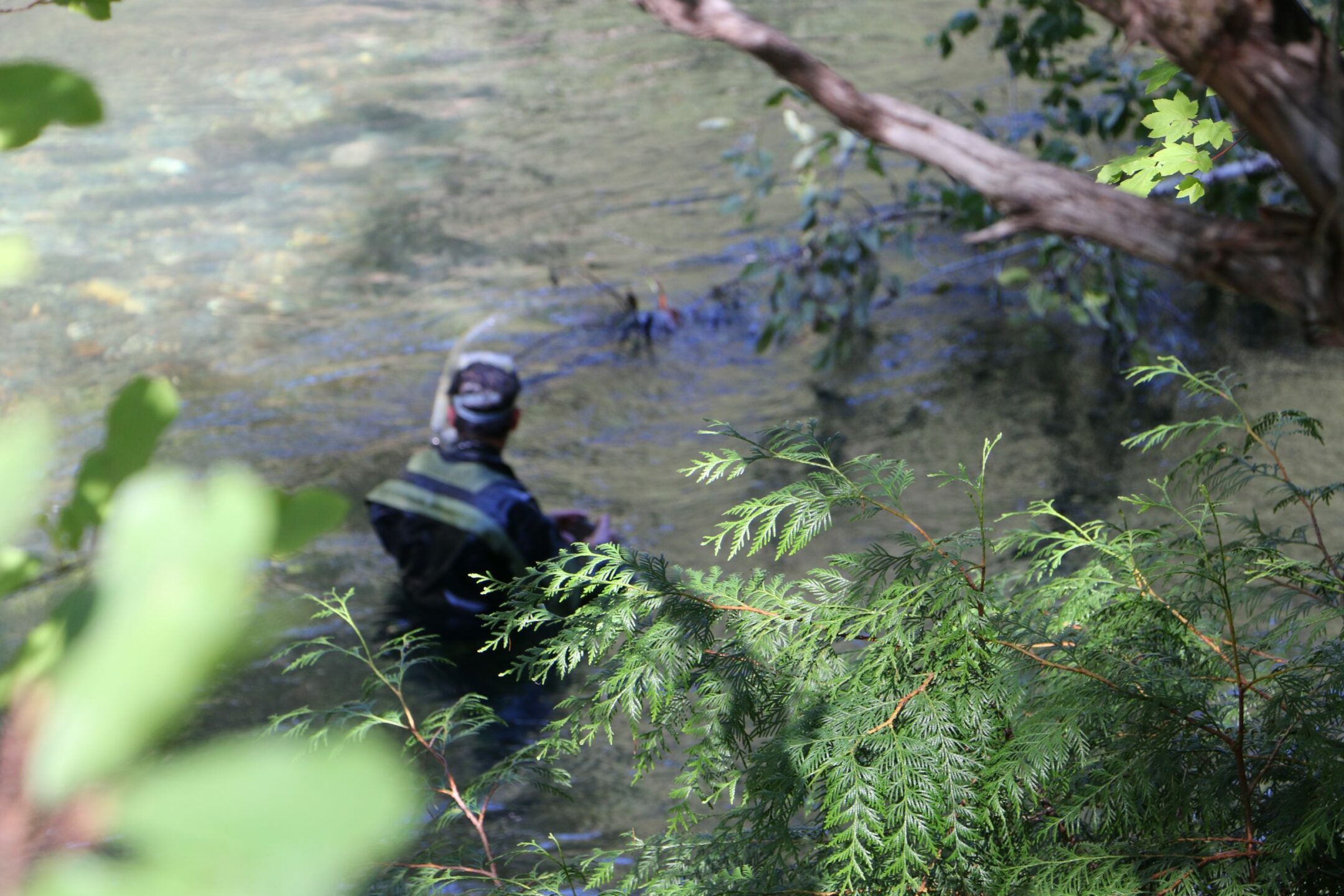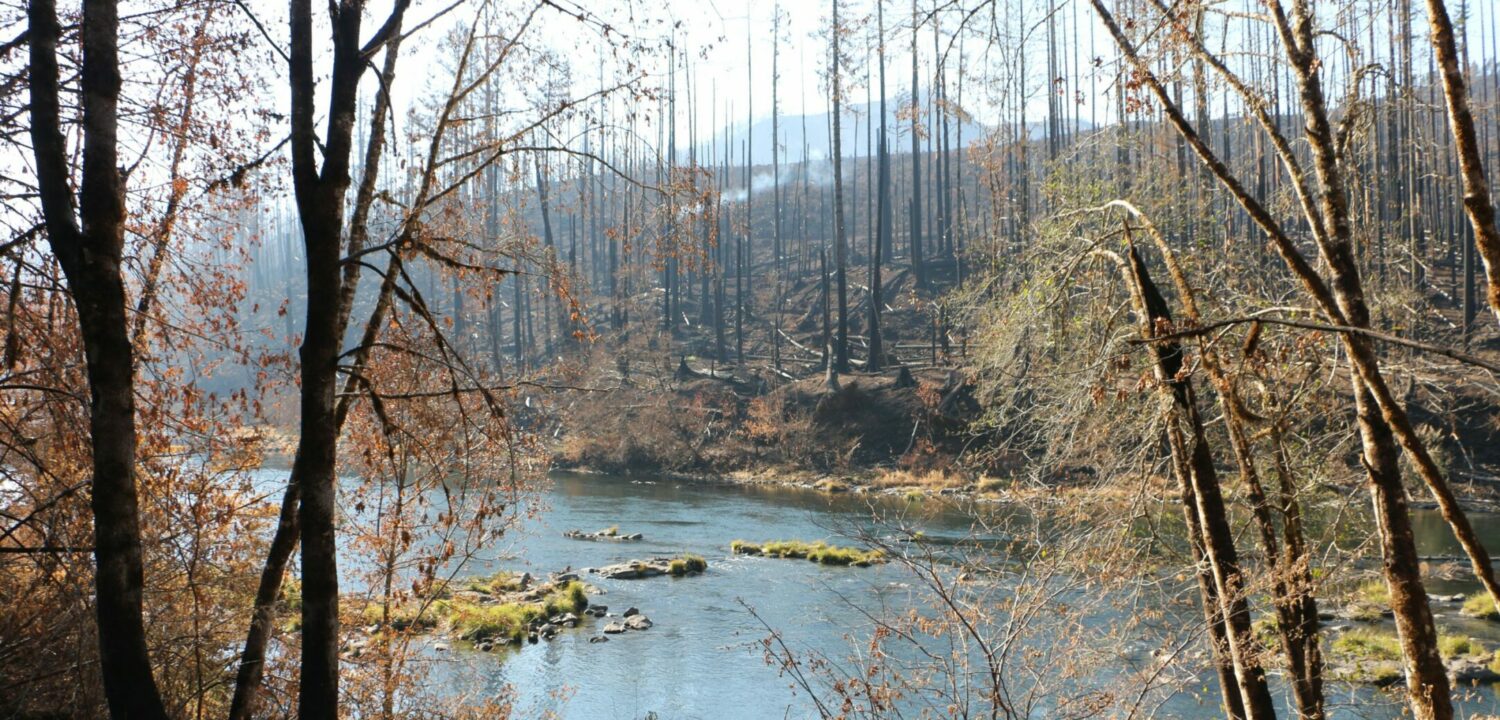As the West grapples with an increasingly fiery future, we can help make sure there’s a silver lining for salmon.
Salmon geneticist Dr. Tasha Thompson knew it was time to go when fire crested the ridge above her hilltop home. As she watched, embers from the approaching blaze shot through the air maybe a mile, igniting the opposite side of Oregon’s North Umpqua River canyon. The Archie Creek Fire had arrived.
“Mike was in the middle of a Zoom lecture,” she recalls, referring to her partner, Dr. Mike Miller, also a geneticist, and a professor at UC-Davis. “He had to tell 50 students that we were evacuating, now.”
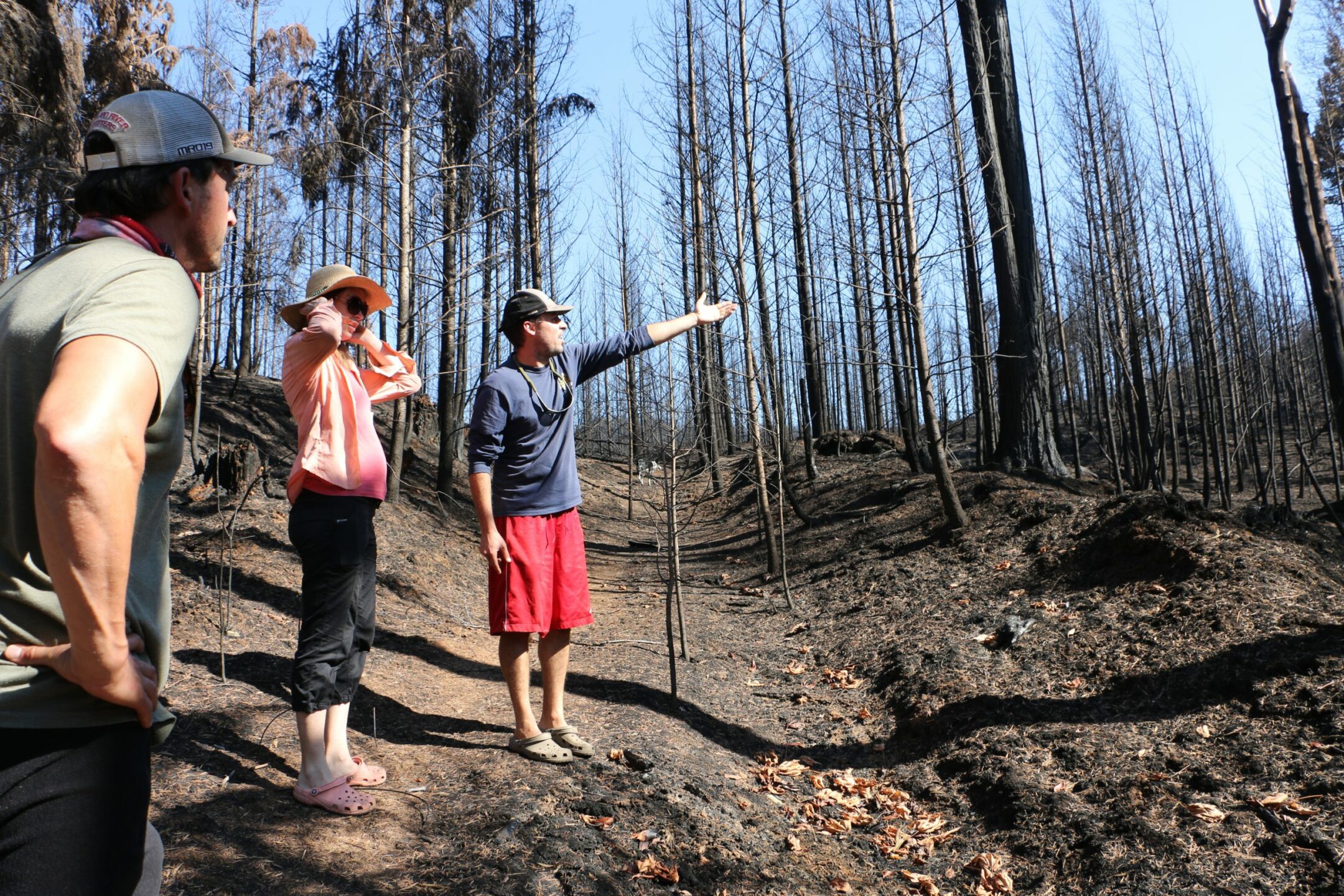
The couple set out extra feed and water for their free-range chickens, scooped up their dog Izzy and some essentials, including precious, newly acquired salmon fin clip samples: data for one of their latest research projects. They piled in the car and began two nomadic weeks, outrunning other Oregon wildfires under a thick veil of choking smoke, ferrying friends (and those fin clips) to safety, couch-surfing with family, and finally learning, through neighbors, that their home was still intact.
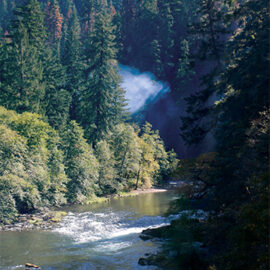
For that, Dr. Miller gives thanks to Dr. Thompson’s training as a former wildland firefighter; long before the Archie Creek Fire swept through in mid-September, they’d cleared a perimeter around the house and preemptively burned the slope immediately below their house.
Neighbors were not so fortunate. More than 100 residences burned in the Archie Creek Fire, including the home of legendary North Umpqua conservationists Frank and Jeanne Moore, founders of nearby Steamboat Inn. (The Moores are okay and looking to rebuild.)
Back home in late September, the couple pointed to where flames had melted their garden fence, even licked the chicken coop’s wooden frame, maybe 20 feet from the garage. Around them scuttled the chickens, healthy and pecking at desiccated corn cobs.
And just like that, life goes on for these two WSC science partners: remote teaching at UC-Davis, looming research deadlines, and legions of spring Chinook spawning—fires be damned—up and down the North Umpqua.
Surprised? To read the headlines, one might assume that salmon, like humans, suffer greatly when blazes sweep through watersheds: blowing ash and smoke over rivers, felling charred snags, burning riparian zones, and sending rafts of debris downstream.
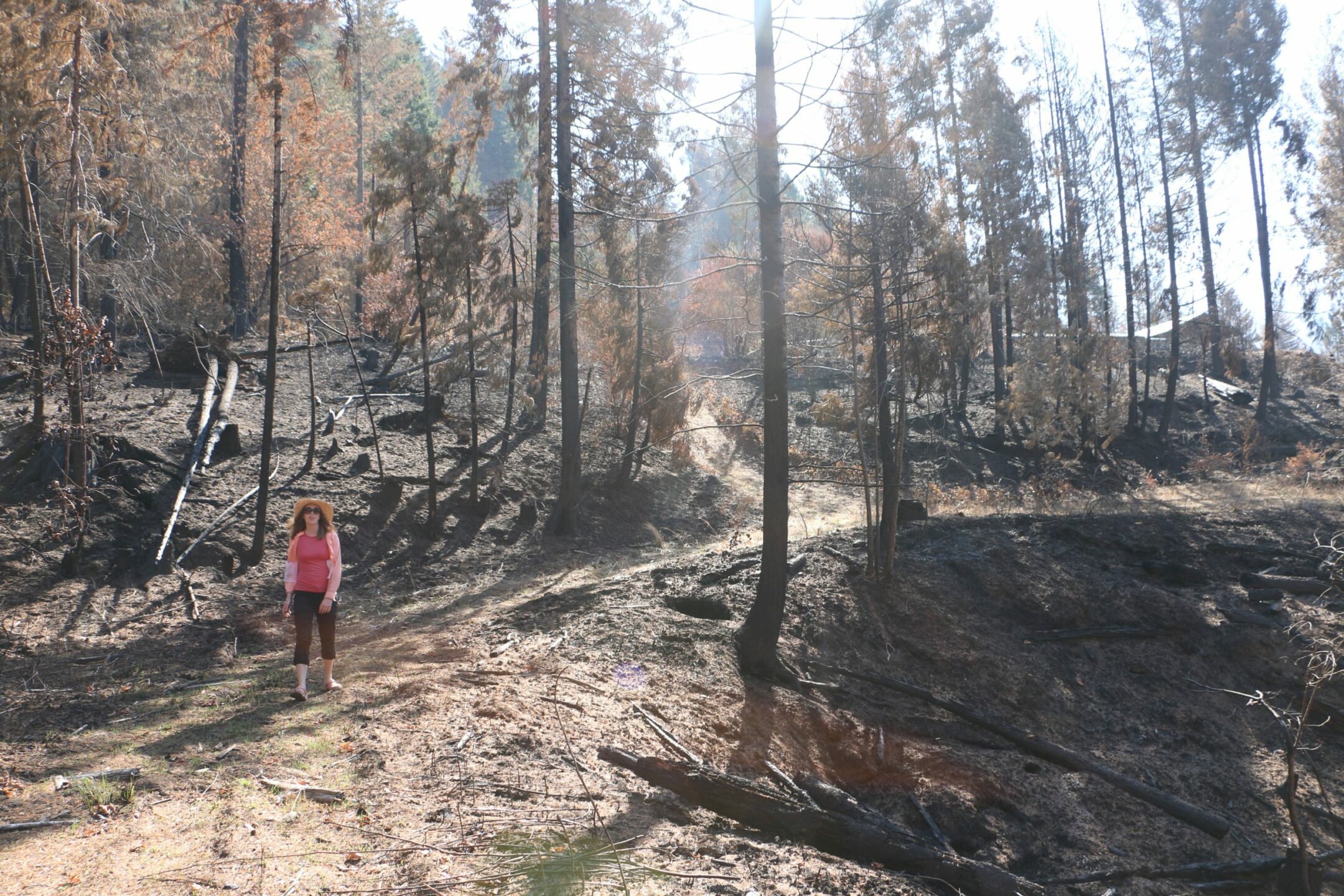
According to Dr. Gordie Reeves, a long-time WSC research collaborator (and mentor to WSC Science Director Dr. Matt Sloat), wildfires can hold some short-term risk for salmon. After fires, rainy season landslides and road washouts can smother eggs, or even bury spawning areas completely. But Dr. Reeves points out that wildfires have shaped Western landscapes for millennia, and salmon—those hardy adapters—co-evolved with them and the benefits they bring.
“Fire is a natural event and it’s important from an ecological perspective,” says Dr. Reeves. “Following fires, landslides and debris flows introduce sediment to rivers, and sediment is one of the main building blocks of new habitat for salmon.”
Following fires, landslides and debris flows introduce sediment to rivers, and sediment is one of the main building blocks of new habitat for salmon.”
To build redds to protect and incubate eggs, spawning salmon look for well-oxygenated gravel beds in river shallows. Size matters, too: spring Chinook tend to favor gravel ranging from 25-100 millimeters in diameter (think bullseye marbles to softballs), while Oregon Coast coho prefer finer gravels (10-50 mm). But over time, water pressure flushes gravel downstream, meaning rivers needs regular influxes of new sediment for salmon to thrive. According to Dr. Reeves, that recharge typically comes from the kind of large sediment pulses that follow wildfires—a bonanza of materials ranging from fine silt to huge boulders and wood.
“Fires are critical for replenishing these systems over time,” says Dr. Reeves. “In the short term, things might look bad, but over the long term these processes are productive.”
Yet humans have become pretty good at suppressing fires and fire-driven changes over the past century—meaning stream recharging events are far less common across the West. Without these dramatic pulses of new material, river systems go “hungry”: lacking both spawning gravel for redds and the woody debris that helps filter and retain it. Aggressive fire suppression isn’t the only way we starve salmon rivers of these building blocks; dams, too, get in the way, trapping sediment in their vast reservoirs.
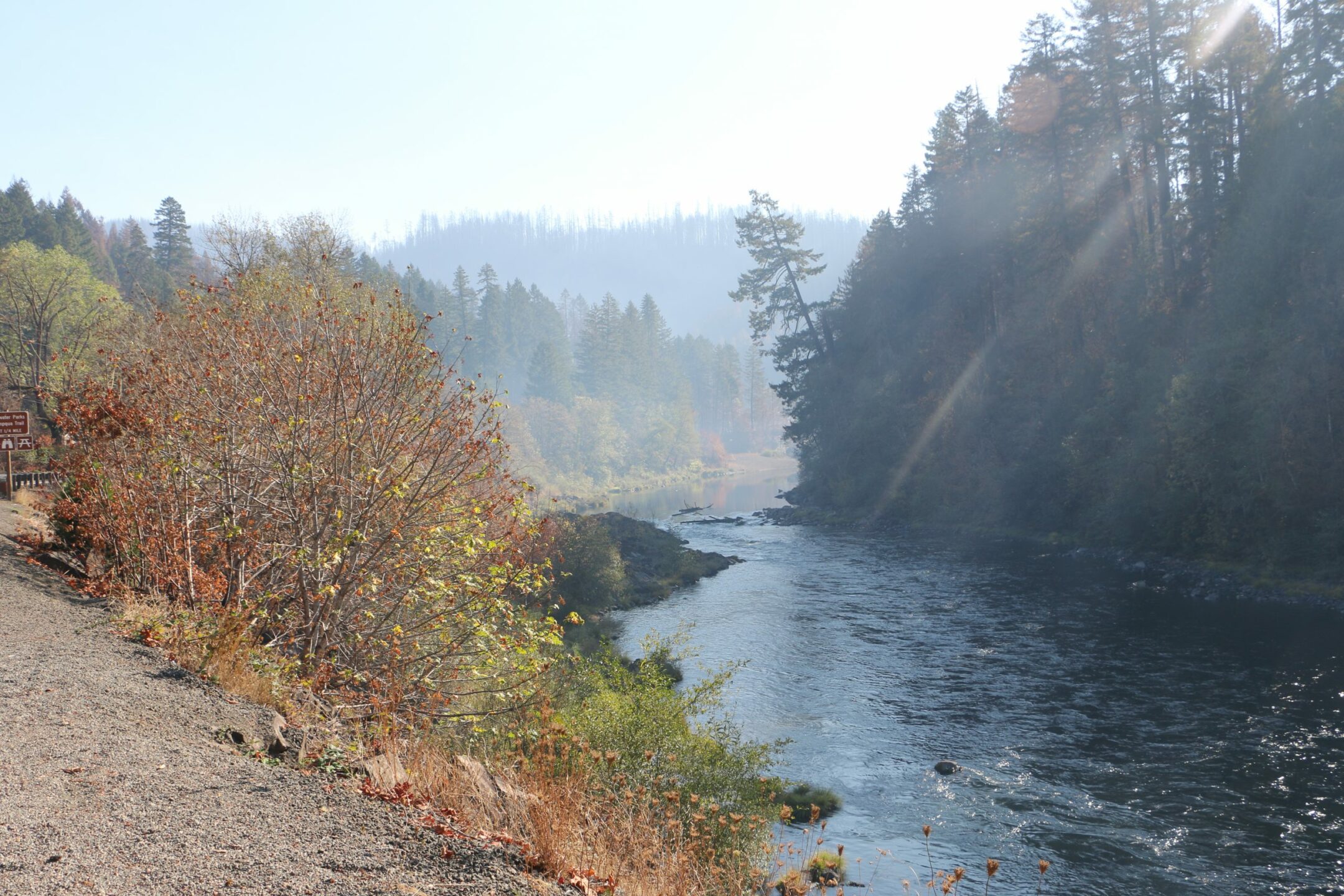
For salmon-loving humans in the fire-prone West, it might be uncomfortable to realize that our efforts to stop wildfires are just one more way we put salmon habitat at risk. It’s worth remembering, says Dr. Reeves, that ecological processes are complex—never simply all good or all bad—and that complexity should be part of how we talk about our interventions. Acknowledging that wildfires hold a silver lining for salmon, he says, means we can be more strategic in how we approach wildfire management.
Aggressive fire suppression isn’t the only way we starve salmon rivers of these building blocks; dams, too, get in the way, trapping sediment in their vast reservoirs.
The North Umpqua could be one place to start re-examining our thinking. With two dams on the river’s upper reaches, Soda Springs and Winchester, the North Umpqua is already losing key spawning gravel. Perhaps we could help correct for that, says Dr. Reeves, if we were more hands-off following events like the Archie Creek Fire.
“After a fire, one of the first actions crews take is try to stop erosion to protect water quality,” he says. Rather than indiscriminately shoring up slopes and erosion hazards (taking an “all bad” approach), Dr. Reeves suggests we look to become more strategic about where we let erosion occur—perhaps allowing sediment to erode into rivers in places where property and drinking water aren’t at high risk.
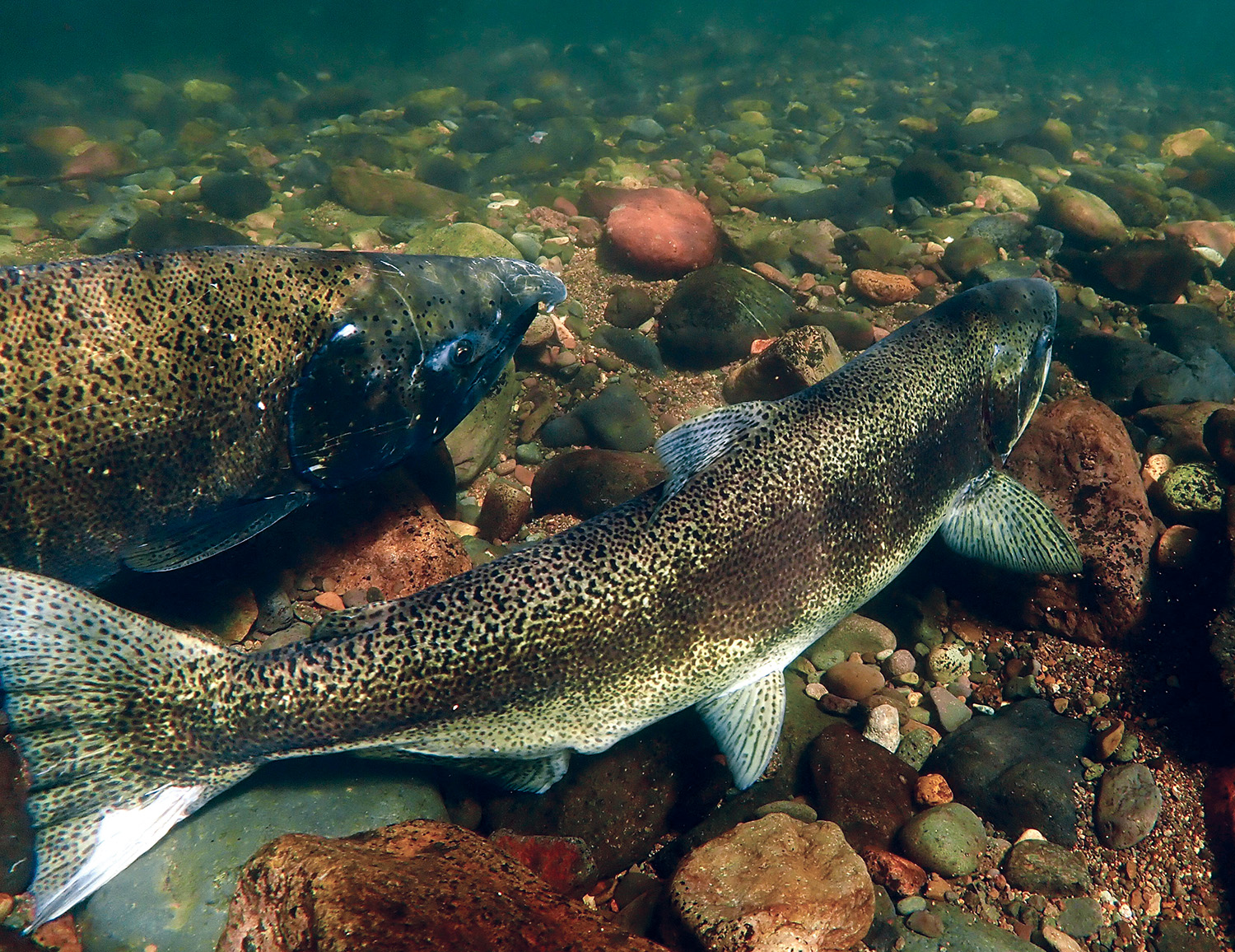
And that thick, pea-soup smoke that blankets whole watersheds during fire season? That too holds a silver lining for salmon. During September’s Archie Creek Fire, North Umpqua water temperature gauges showed an immediate drop—about 15 degrees in the fire’s first week.
“This is a good thing!” says Dr. Reeves. “These are the times when adult fish are returning to spawn. A fish returning from the ocean is trying to get to where it spawns while expending as little energy as possible. Hot summer water temperatures add stress, so fish traveling through smoke-cooled streams may have more energy to spend reproducing.”
A fish returning from the ocean is trying to get to where it spawns while expending as little energy as possible. Hot summer water temperatures add stress, so fish traveling through smoke-cooled streams may have more energy to spend reproducing.”
On the North Umpqua near Dr. Thompson and Dr. Miller’s home, the Archie Creek Fire’s patchwork burns ultimately spared much of the river’s critical Chinook and steelhead habitat. Upstream a few miles, a rope of smoke coiled near the mouth of Steamboat Creek, even as this renowned steelhead tributary remained ringed with greenery. For the next many generations of the North Umpqua’s wild salmon and steelhead, the Archie Creek Fire may mean fresh gravel for spawning, downed trees and boulders for new holding pools, habitat for new populations to find and colonize.
“The fish we love and are trying to conserve are highly adapted to these landscapes,” says Dr. Reeves. “In places from Yellowstone to the John Day and Montana, native fish populations have been shown to recharge, grow stronger after fires. And they’ll continue to do so if we give them half a chance.”
